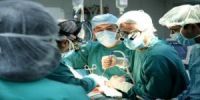Article
A Quick Review of Anal Abscess and Fistula
Author(s):
In an attempt to close the knowledge gap on anal abscess and fistula, 2 surgeons have published a comprehensive review on those topics.

The two most common types of benign anorectal disease cases — anal abscess and fistula — are terribly troubling to patients. Exacerbating doctor-patient communication, physicians often have trouble explaining the diseases’ pathophysiologies to patients, and they may be unaware of current diagnoses and treatments.
In an attempt to close the knowledge gap, 2 surgeons from the Department of Surgery at the University of Massachusetts Medical School recently published a comprehensive review article on those topics.
In addition to addressing anal abscess and fistula individually, the article also discussed the potential relationship between the 2 conditions, especially if anal abscess incision and drainage is incomplete or delayed, as continued inflammation may cause formation of a non-healing tract that becomes a fistula.
The article pointed out that antibiotic use to address abscess does not seem to decrease the likelihood of fistula formation; in fact, it may actually increase risk. Other risk factors for anal abscess include ischiorectal location and comorbid Crohn’s disease or diabetes mellitus. As with other pathologies, the condition’s severity and the patient’s ability to mentally and physically deal with proposed procedures dictate whether the operation can be performed in an office setting.
For their coverage of anal fistula, Edward B. Sneider and Justin A. Maykel reviewed the classification system and discussed the approximate clinical distribution among different types. While fistulizing Crohn’s disease and its treatment “remain complicated, frustrating, and challenging,” the authors discussed including the use of fistulotomy and setons — which are suture or vessel loops passed through the fistula tract and tied to form a continuous ring between the internal and external opening — as a method to resolve the acute-on-chronic inflammatory process. The authors said the main goals are to complete wound healing, maintain continence, and prevent of future recurrence.
Sneider and Maykel advised surgeons to tailor treatment to the individual patient after assessing baseline continence and degree of sphincter involvement. After explaining how anal abscess and fistula come about, surgeons should review the patient’s options, reported success rates, and complications, and then help the patient decide what would work best for his or her unique circumstances, the authors concluded.





